above: Malachite Beetle (Malachius bipustulatus) © Rob Randall
Due to unforeseen developments the number of speakers was reduced to just Alvan White and Rob Randall. However they had more than enough material to interest the small gathering. This created a relaxed atmosphere with audience members asking questions and making observations as the evening progressed.
Alvan’s interest in insects is well known and he introduced us to a wide variety of species. Their locations ranged from this area (his garden, Brean Down, Newton St Loe) to sites further afield such as Kielder Water in Northumberland.
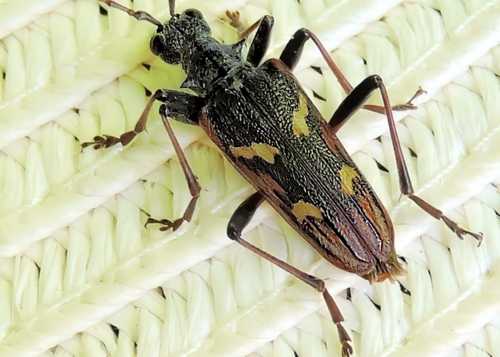
Two Banded Longhorn Beetle (Rhagium bifasciatum), Kielder Forest © Alvan White
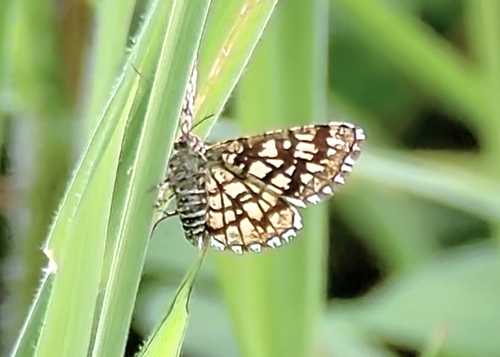
Latticed Heath (Chiasmia clathrata) Greenhaugh, Northumberland © Alvan White
Alvan started by showing a photograph of a cleanly bitten rose leaf taken in his garden. He recounted how his investigations revealed the culprit was a Patchwork Leaf Cutter Bee (Megachile centuncularis). It is one of our more common Leaf Cutter Bees and when seen from overhead there can appear to be an orange halo around the abdomen. The females are known to cut out sections of leaves that are then used to build cells for their young to develop in. This insightful look into the life of this most interesting insect was the first of many.
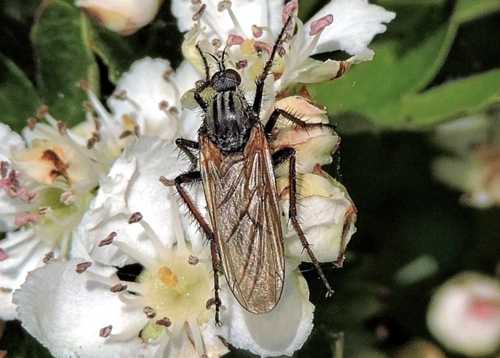
Empis tesellata, Brean Down © Alvan White
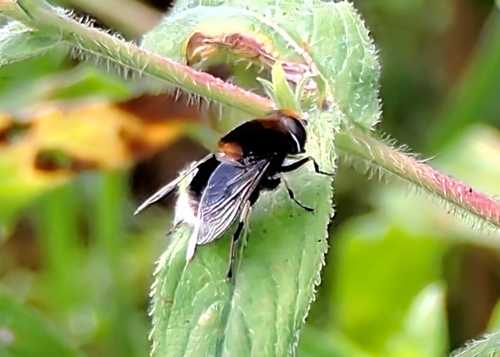
Furry Dronefly (Eristalis intricaria), Newton St Loe © Alvan White
On Brean Down Alvan came across Dance Flies (Empididae). The fact that the males offer the females a balloon of saliva with nothing inside amused the females in the audience. The chuckles seemed to indicate the female Dance Flies were not alone in being given such ‘presents’.
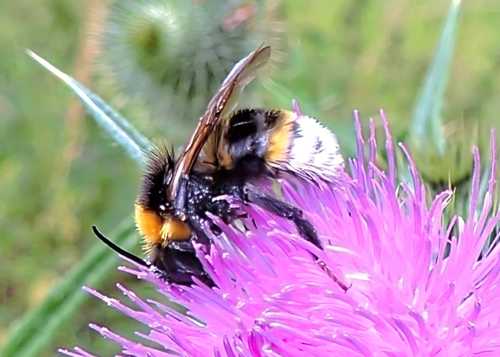
Southern Cuckoo Bumbe Bee, East Woodlands © Alvan White
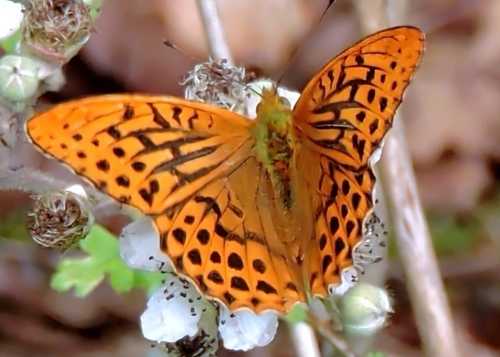
Silver Washed Fritillary, East Woodlands © Alvan White
One of the best locations I have been to with Bath Nats is the East Woodlands near Frome. There was a wide mixture of wildlife on view from interesting birds like the Spotted Flycatcher, butterflies like the Purple Hairstreak (Neozephyrus quercus), Dragonflies like the Golden-ringed Dragonfly (Cordulegaster boltonii), and wild flowers like the Lesser Skullcap (Scutellaria minor). Within the East Woodlands reserve was a treasure trove of wildlife. Here Alvan came across the Southern Cuckoo Bee (Bombus vestalis). It is aptly named as it behaves in a similar way to the Cuckoo bird (Cuculus Canorus) in laying eggs in the nest of the Buff-tailed Bumble Bee (Bombus terrestris) for them to be brought up by the host worker bees. The two species look very similar, which very much explains how this parasitic act works. If needed the Cuckoo Bee can wipe out the Buff Tailed Bumble Bee Queen.
If you get a chance to go for a walk with Alvan take it. You will learn a lot. The same can be said about the second speaker, our President, Rob Randall.
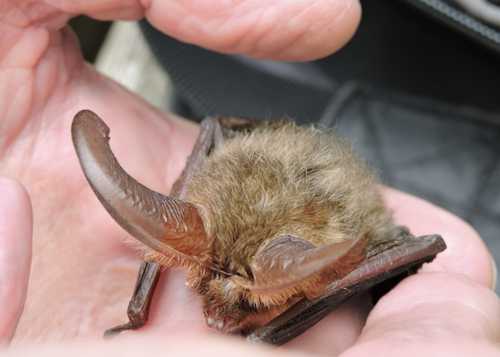
Corpse of Brown Long-eared Bat (Plecotus auritus) © Chris Woods
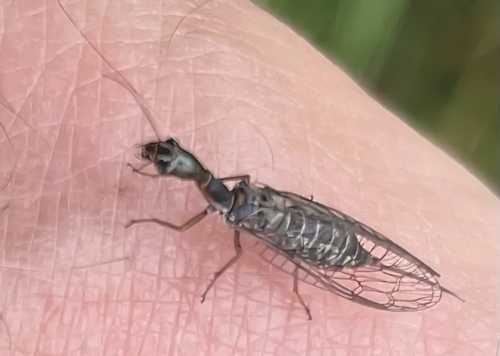
Snake Fly first record in Wiltshire © Chris Woods
Rob followed Alvan showing insects that can be found in the BNHS 2023 Summer Sightings. The items covered started with a Malachite Beetle (Malachius bipustulatus) photographed by Alvan on the 4 June 2023 to a deceased Brown Long-eared Bat (Plecotus auritus) Chris Woods came across at Thickwood on the 28 August 2023. In between were a number of insects taken by a variety of the society’s members. These ranged from Emma Fisher’s Bee Orchid (Ophrys apifera) on an unmown lawn to Chis Woods’ first Wiltshire record for a Snake Fly (Raphidioptera), and Alan Feest’s photograph of Befeldia maxima which is the world’s largest Slime-mould as well as Glen Madison’s Walcot sightings of the Gypsy Moth (Lymantria dispardispar) and the White Point Moth (Mythimna albipuncta).
The talk highlighted the depth of knowledge and the range of interests of Bath Nats members.
Both Alvan and Rob must be congratulated for extending their 10-minute planned talks between them into a fascinating hour long presentation.
Andrew Harrison


Recent Comments